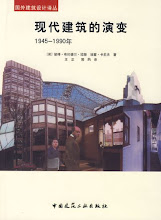Thursday 28 June 2012
Monday 25 June 2012
Friday 22 June 2012
Tuesday 19 June 2012
Saturday 16 June 2012
Wednesday 13 June 2012
Regarding the proposed obstruction of LIBRARY WALK
Dear Sirs
I wish to object to the proposed plan to construct an obstructing pavilion in Library Walk, thereby rendering this important pedestrian route redundant. I write as an internationally recognised expert in urban design, but more importantly as a citizen of Manchester, and it is the civic amenity of Library Walk which I wish to defend from an act of wholly unnecessary vandalism.
Since the construction of the Central Library and the Town Hall Extension this route has been a convenient path for citizens between two major public places, namely Albert Square and St. Peter's Square. It was a pedestrian route decades before pedestrianisation became a vogue in urban design.
But E.Vincent Harris's skill went beyond the prosaically utilitarian. Citizens were offered a unique aesthetic experience which Manchester City Council should seek to protect. The narrowing of the space adds a sense of anticipation to the route in either direction, because it is clearly a very carefully integrated piece of architectural and urban composition of the highest calibre. The controlled views that terminate the route, either that of the restrained nineteenth century neoclassicism of the Friends' Meeting House or the sublime and timeless monumental composition of the Cenotaph are a unique twentieth century contribution to Manchester's genius loci. The unfolding view was identified as a key attribute to townscape and here Manchester has a supreme example if the City Council would but realise it.
As architectural designs Harris's two buildings are completely resolved in their own terms despite their differing aesthetic languages, a level of completion which was entirely typical of the era in which they were built. The careful geometric composition of the urban space between them is also fully resolved. This completion leads to aesthetic problems for any proposed intervention since it will inevitably take the form of a dissonant and jarring obstruction in an environment which is governed by proportion.
The current proposal commits a number of errors, providing ample opportunity for litter to gather in the narrow corners created, relying on the transparency of the glass to reduce the visual impact of the obstruction when precisely this material will attract pollution staining, and the inevitable visual clutter of warning signs and administrative detritus which will accumulate. But the worst error of all is that the proposal creates cul de sacs, types of space which are fundamentally anti-urban in character. Permeability of urban fabric is a key tenet of successful urban design, a lesson which this current proposal has not learnt, and which will be negated by the proposed construction of gates.
I therefore urge Manchester City Council to reconsider, and furthermore to recognise that Library Walk is a unique urbanistic asset where Harris was right first time.
Yours faithfully
Eamonn Canniffe M.A. Dip. Arch (Cantab)
Programme Leader, MA in Architecture + Urbanism
Manchester School of Architecture
Saturday 9 June 2012
Thursday 7 June 2012
Subscribe to:
Posts (Atom)


























































